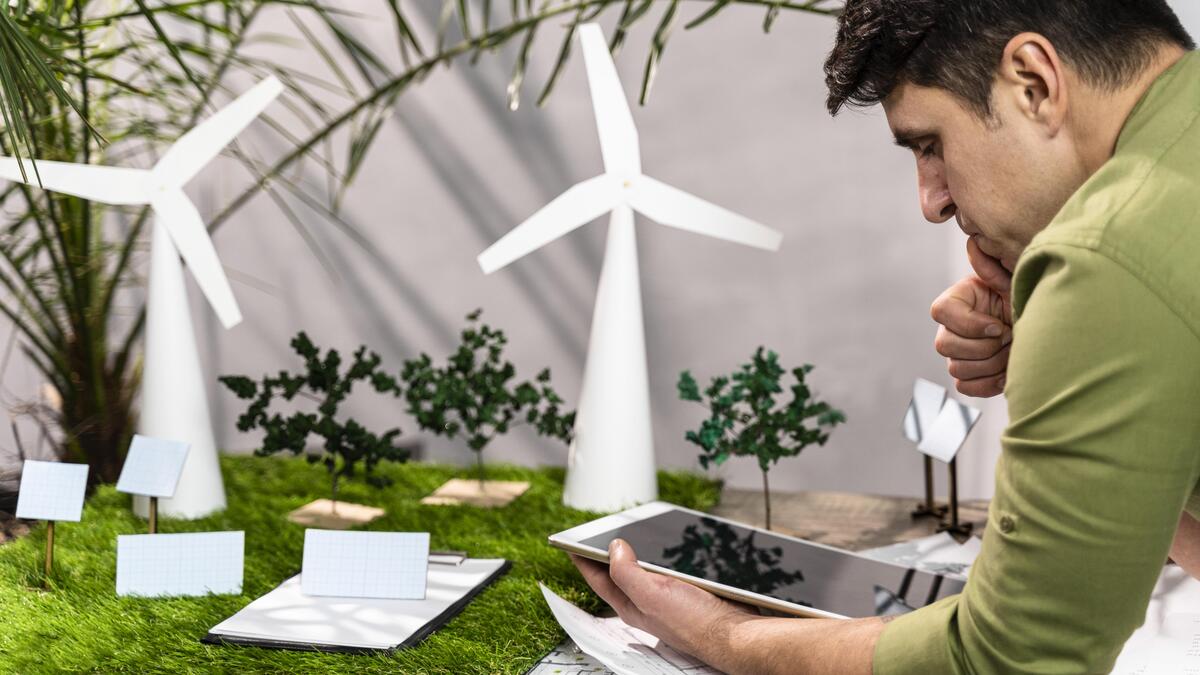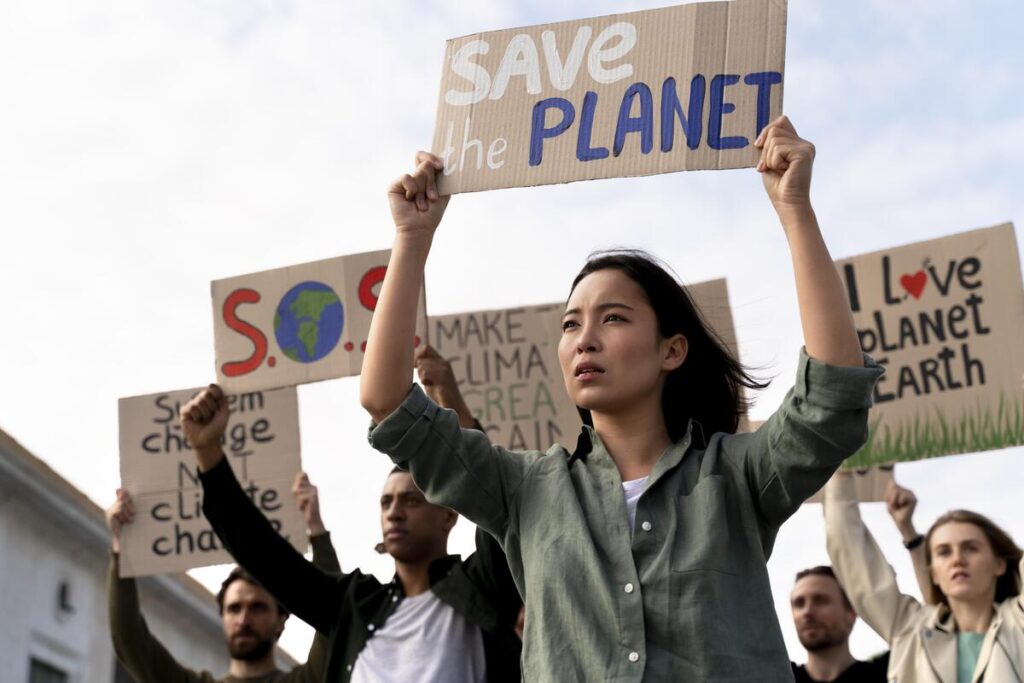COP29 is set to be a pivotal event in the global climate agenda, bringing together countries, experts, and organizations to tackle the growing challenges of climate change. As the climate crisis worsens, COP29 will prioritize measures that protect economies, ecosystems, and communities from climate-related disruptions, with a particular emphasis on strengthening global climate resilience. It is anticipated that this year’s conference will focus on specific steps to accomplish the goals established at past summits, such as the Paris Agreement, while adjusting to new scientific discoveries and rising threats.
]More effective mitigation and adaptation plans, technological transfer, and funding for underdeveloped countries will be important subjects. COP29 seeks to strengthen international commitments, spur innovation, and guarantee that vulnerable regions receive the assistance they need to prosper in a changing climate as stakeholders work together to develop solutions that will make society more resilient to catastrophic weather events.
Table of Contents
What is COP29?
The United Nations Framework Convention on Climate Change (UNFCCC) includes the 29th Conference of the Parties, or COP29. Every year, world leaders, scientists, and negotiators convene on this crucial forum to evaluate progress, reach decisions, and develop plans of action to tackle climate change. Every COP expands on earlier accords with the goal of strengthening goals, improving policies, and developing frameworks that direct countries toward net-zero emissions and sustainable development.
Key Objectives of COP29
The COP this year is anticipated to concentrate on a number of crucial topics to improve climate resilience worldwide. Among these goals are:
- Encouraging Adaptation and Resilience: Increasing adaptation efforts to assist countries in mitigating the impacts of extreme weather events, including heat waves, floods, and hurricanes.
- Strengthening Climate Finance: Securing commitments for financial aid, especially for developing countries facing the worst impacts of climate change. Enhancing the Green Climate Fund (GCF) to aid in adaptation and mitigation initiatives is one aspect of it.
- Monitoring and Accountability: To make sure that nations fulfill their climate pledges, transparency and accountability systems should be strengthened.
- Advancing Technological Innovations: Facilitating technology transfer to developing nations to promote green energy, sustainable agriculture, and climate-resilient infrastructure.

Benefits of COP29’s Focus on Climate Resilience
COP29 must prioritize climate resilience for several reasons:
- Preserving Lives and Livelihoods: During catastrophic weather events, effective adaptation strategies can lessen the loss of people and property.
- Economic Stability: By averting interruptions to infrastructure, industry, and agriculture, resilience investments promote economic stability.
- Social Equity: Supporting the most vulnerable populations is consistent with the values of equity and climate justice.
The Role of Finance in COP29
One of the most important and divisive subjects of COP29 is still finance. Rich countries have promised to donate $100 billion a year to assist developing nations in mitigating and adapting to climate change. But keeping this promise has been difficult. By promoting greater transparency and investigating creative finance methods, COP29 seeks to address these financial deficiencies. Green bonds, carbon pricing, and debt-for-climate swaps might all be discussed. Initiatives like coastal fortifications, climate-resilient agriculture, and renewable energy projects in vulnerable areas require adequate finance.
Suggested article to read: The Role of EMS in Smart Construction & IoT-Driven Project (2024)
Adaptation Strategies and Enhancing Resilience
Since the effects of climate change are growing more severe and pervasive, adaptation is a key priority for COP29. Strategies for adaptation that work well could include:
- Enhancements to the Infrastructure: Constructing robust infrastructure that can resist severe weather conditions.
- Agricultural Adaptation: Promoting sustainable farming practices that can cope with changing weather patterns.
- Biodiversity Conservation: Protecting ecosystems that act as natural buffers against climate impacts.
- Water Management: Creating mechanisms to control floods and water scarcity.
COP29 wants to make sure that communities around the world are better prepared to manage climate threats by putting an emphasis on adaptation.

Technological Innovations for Climate Resilience
The global reaction to climate change heavily relies on technology. Innovations that can improve resilience will be highlighted at COP29, including:
- Renewable Energy Systems: Scaling up solar, wind, and hydroelectric projects to reduce the need for fossil fuels.
- Smart Agriculture: Introducing technologies like precise farming, drought-resistant crops, and AI-driven weather forecasting.
- Early Warning Systems: Improving climate prediction tools to offer early warnings for severe weather.
- Urban Solutions: Encouraging IoT and AI-powered smart cities for trash management, public transit, and energy efficiency.
Challenges Facing COP29
Notwithstanding the lofty objectives, COP29 confronts a number of obstacles that could prevent advancement:
- Political Differences: Negotiations may be halted by disputes between industrialized and developing nations about obligations and responsibilities.
- Funding Gaps: One controversial topic is the discrepancy between promised and actual climate money.
- Implementation Barriers: It is still difficult to translate international agreements into local policies that can be implemented, especially in areas without the required governance and infrastructure.
Expected Results of COP29
The following are some anticipated results from COP29:
- Greater International Commitments: Nations may decide to adopt more aggressive Nationally Determined Contributions (NDCs) in an effort to keep global warming to 1.5°C.
- Improved International Cooperation: More cooperation between countries to exchange knowledge, technology, and climate resilience best practices.
- New Financial Mechanisms: The implementation of creative financing options to aid in adaptation and mitigation initiatives.

Conclusion
COP29 has the potential to revolutionize global climate governance. The conference aims to equip countries to endure the worsening effects of climate change by emphasizing adaptation, resilience, and financial support. COP29 will probably advocate for more robust commitments, open monitoring, and workable solutions that are in line with scientific advice, given the rise in extreme weather occurrences and the pressing need for climate action.
The focus on resilience underscores a move from merely mitigating climate change to making sure that society are prepared to deal with it as nations get together to negotiate and make commitments. A successful outcome at COP29 would mark a watershed in which international cooperation results in real climate action that will protect the environment and benefit future generations. In addition to influencing climate legislation, the results will also have an impact on how communities, businesses, and economies adjust and prosper in a resilient, sustainable world.
FAQs
What is COP29, and why is it important?
- Answer: Enhancing global resilience to climate change through reduction, adaptation, and financial support is the main goal of the 29th United Nations climate summit, or COP29.
How does COP29 aim to strengthen climate resilience?
- Answer: In order to assist countries in adapting to and lessening the effects of climate change, COP29 will give top priority to measures including financial assistance, technical advancement, and infrastructure upgrades.
What are the main challenges facing COP29?
- Answer: Securing adequate climate funding, overcoming political divides, and making sure that international pledges are implemented locally are some of the major obstacles.
Why is financial support a focus at COP29?
- Answer: For developing nations to invest in green technologies, put adaptation plans into action, and make the shift to low-carbon economies, financial assistance is essential.
What outcomes are expected from COP29?
- Answer: Stronger pledges to reduce emissions, new financing sources, and improved international cooperation on climate resilience are all anticipated outcomes of COP29.
Suggested article for reading:
Case Study: Top 4 Eco-Friendly Smart Building Construction Projects
The Future of Smart Construction; 2024 Review
Top 23 Famous Women Architects in World; 2024 Review
LCA in Building Materials: 5 Ways to Select Sustainable Options
The Role of PIM in Sustainable Construction (2024)
LCA and Carbon Footprint: 10 Effective Reduction Strategies
The Top 7 Green Architecture Projects
Resources:
Intergovernmental Panel on Climate Change (IPCC) | United Nations Framework Convention on Climate Change (UNFCCC) | Climate Action Tracker | World Resources Institute (WRI) | The Green Climate Fund (GCF)
For all the pictures: Freepik



